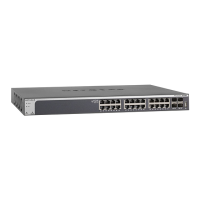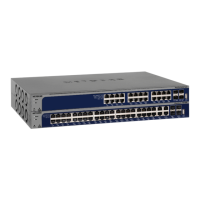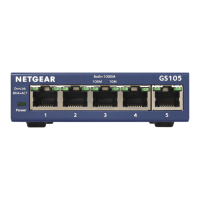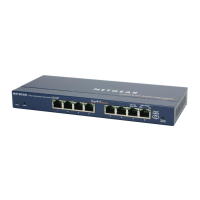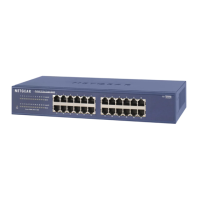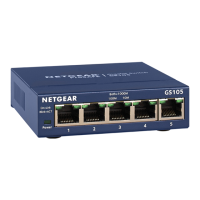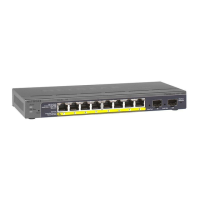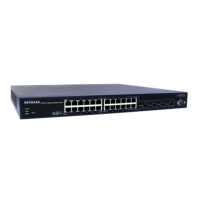Configuration Examples
191
XS728T ProSAFE 28-Port 10-Gigabit L2+ Smart Switch
The DiffServ feature contains a number of conceptual QoS building blocks you can use to
construct a differentiated service network. Use these same blocks in various ways to build
other types of QoS architectures.
There are three key QoS building blocks needed to configure DiffServ:
• Class
• Policy
• Service (that is, the assignment of a policy to a directional interface)
Class
You can classify incoming packets at Layers 2, 3, and 4 by inspecting the following
information for a packet:
• Source and destination MAC addresses
• EtherType
• Class of Service (802.1 p priority) value (first or only VLAN tag)
• VLAN ID range (first or only VLAN tag)
• IP service type octet (also known as: ToS bits, precedence value, DSCP value)
• Layer 4 protocol (such as TCP or UDP)
• Layer 4 source and destination ports
• Source and destination IP addresses
From a DiffServ point of view, there are two types of classes:
• DiffServ traffic classes
• DiffServ service levels or forwarding classes
DiffServ Traffic Classes
With DiffServ, you define which traffic classes to track on an ingress interface. You can define
simple BA classifiers (DSCP) and a wide variety of multifield (MF) classifiers:
• Layer 2; Layers 3, 4 (IP only)
• Protocol-based
• Address-based
You can combine these classifiers with logical AND or OR operations to build complex
MF-classifiers (by specifying a class type of all or any, respectively). That is, within a single
class, multiple match criteria are grouped as an AND expression or a sequential OR
expression, depending on the defined class type. Only classes of the same type can be
nested; class nesting does not allow for the negation (that is, exclude option) of the
referenced class.
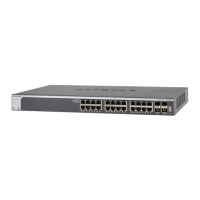
